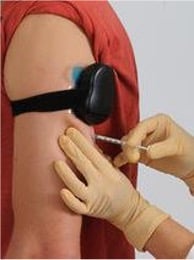Blog

Spring Flowers Bringing Seasonal Allergies? - PCL
It’s finally warming up, so it's a great time to get out to enjoy some natural Vitamin D by getting outdoors. Yet, this time of year can be a blessing and a curse for those with allergies and asthma. April showers bring rain, blooming flowers, and lots of pollen, including grass and tree pollen. If spring brings suffering for you or your loved ones, you are in good company. According to the Asthma & Allergy Foundation, over 24 million in the U.S. have been diagnosed with seasonal allergic rhinitis, or hay fever, impacting 19.2 adults and 5.2 million children.
What can you do? Top Strategies to Relieve Symptoms
Here are some of some top strategies from Mayo Clinic to help get allergies under control so you can get back to enjoying life outdoors.
1) Reduce exposure to allergy triggers: Stay inside on windy days or wait until the rain clears pollen from the air. Remove clothes you’ve worn outside & shower.
2) Keep inside air clean - Use A/C, portable HEPA filters, and vacuum frequently.
3) Try over-the-counter solutions: Oral antihistamines (ex: Allegra, Zyrtec, Claritin), cortisoteroid nasal sprays (Flonase, Nasacort), oral decongestants (Sudafed, Allegra, Zyrtec). Ask your pharmacist for recommendations.
4) Rinse sinuses - Our drug-free favorite! Use saline solution to flush out mucus and allergens. Use a neti pot or try great kits like Navage or NeilMed that can make it easy. See a video on nasal irrigation here.

Don't Suffer - Seek Help from PCP or Allergist
If these don’t work, see your primary care provider, who may refer you to an allergist. They may recommend allergy testing to identify triggers and consider a range of therapies, including over the counter or prescription medications, sublingual immunotherapy (tablet is placed under the tongue) and injections that can help better control your allergies and/or asthma, bringing lasting relief.
For Allergy Testing
Allergy testing may be uncomfortable and cause itching. To relieve the itching from allergy testing, place Buzzy® “Between the brain and the pain”. For testing on the arm, place Buzzy® closer to the shoulder as close as possible to the scratch patch. For testing on the entire back, place Buzzy® between the shoulder blades. The nerves come in horizontally to the spine, then up the spine, so the top of the spine as close as possible to the “scratch patch” is the right place.
Typical experience using Buzzy® for scratch testing
- Itching was relieved after 7 seconds when Buzzy® was used with ice pack.
- Itching was relieved after 12 seconds when used with vibration alone.
- Buzzy® was more effective when pressed in place at the top of the spine, but was not as effective when simply lying on the back.
- After removing Buzzy®, the itching returned after 17 seconds following the buzzy-plus-ice wing trials, and after 13 seconds following the vibration only trials.
Cold (down to -20F) has been researched and found NOT to alter the histamine reaction allergy tests look f
or. In addition, Buzzy® was found to be the most effective intervention to relieve the discomfort of testing.
For Allergy Injections
- P
 lace Buzzy® directly on the site for 30-60 seconds before the procedure
lace Buzzy® directly on the site for 30-60 seconds before the procedure - Place “between the brain and the pain” during the needle placement and medication administration.
- For subcutaneous placement on the back side of the arm, place Buzzy as shown in the picture below, then slide Buzzy® toward the armpit/head during the shot itself.